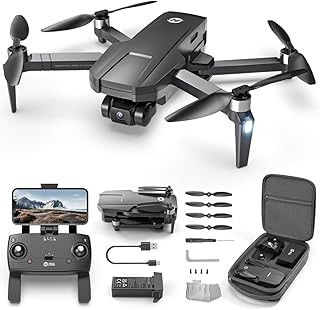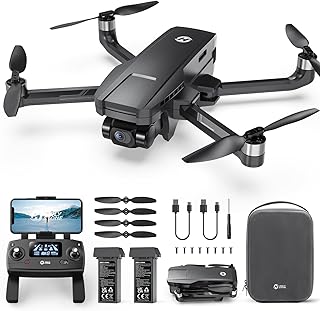Holy Stone Drone for Beginners: A Step-by-Step Guide to Flying
Congratulations on your new Holy Stone drone! Getting started with a drone can be exciting, but it's important to learn the basics first to ensure a safe and enjoyable experience. This step-by-step guide will help you get flying in no time:
1. Unboxing and Charging:
* Unpack everything: Carefully remove all components from the box, including the drone, remote control, battery, charging cable, and any additional accessories.
* Charge the battery: Before your first flight, ensure the drone battery is fully charged. Plug it into a power source using the provided charging cable.
* Charge the remote control: Some remote controls require their own batteries. Check if your remote needs batteries and insert fresh ones.
2. Download the App (if applicable):
* Check compatibility: Some Holy Stone drones have a companion app that offers additional features, such as camera controls, flight modes, and more.
* Download the app: Search for "Holy Stone" in your smartphone's app store and download the appropriate app for your drone model.
* Connect to the drone: Follow the app instructions to connect your drone to your smartphone via Wi-Fi.
3. Familiarize Yourself with the Drone and Remote:
* Understand the drone's controls: Identify the control sticks on the remote control. These are typically used for movement and direction.
* Learn about buttons and switches: Other buttons on the remote might control functions like takeoff, landing, altitude hold, camera control, and flight modes.
* Read the manual: Carefully go through the user manual for your specific drone model. It will provide detailed instructions on the controls, features, and safety procedures.
4. Choose a Safe Flight Area:
* Open space: Select an open area with plenty of airspace above and clear of obstacles like trees, buildings, and power lines.
* Legal regulations: Check local laws and regulations regarding drone flying in your area. Some areas might have restrictions on drone operation.
* Avoid crowded areas: Keep your drone away from people and avoid flying over sensitive areas like stadiums or private property.
5. First Flight: Takeoff and Landing:
* Turn on the drone and remote: Power up your drone and remote control, ensuring both are connected.
* Calibration (if needed): Some drones require calibration before takeoff. Refer to your manual for instructions on how to calibrate your drone.
* Takeoff: Gently push the left stick upwards to make the drone ascend. Keep it low to the ground for your first few flights.
* Practice hovering: Gently adjust the control sticks to maintain a stable hover.
* Landing: Slowly lower the drone to the ground by pushing the left stick downwards. Ensure a smooth and controlled landing.
6. Additional Tips for Beginners:
* Start with simple maneuvers: Practice flying in a straight line, turning, and hovering before attempting more complex maneuvers.
* Stay in visual line of sight: Always keep your drone within your line of sight and avoid flying beyond the legal distance allowed.
* Don't fly in adverse weather conditions: Avoid flying in strong winds, rain, or snow, as these conditions can be dangerous.
* Respect other airspace users: Be aware of other aircraft, especially in areas with controlled airspace.
* Practice regularly: The more you fly, the better you'll become at controlling your drone.
7. Advanced Techniques:
* Learn about flight modes: Explore different flight modes offered by your drone, such as altitude hold, headless mode, and GPS return to home.
* Experiment with camera control: Try taking photos and videos from different angles and heights.
* Practice advanced maneuvers: Once you are comfortable with basic flying, try practicing more challenging maneuvers like flips, rolls, and other aerial tricks.
Remember:
* Safety comes first! Follow all safety procedures and be aware of your surroundings.
* Start with a small drone: Beginners are recommended to start with a small, beginner-friendly drone to practice their skills.
* Have fun! Enjoy the thrill and freedom of exploring the world from a new perspective!
By following these steps and practicing consistently, you'll become a proficient drone pilot in no time. Happy flying!


